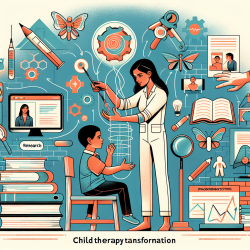Understanding the Role of Neighborhood Factors in Child Behavior
In the realm of speech-language pathology and child development, understanding the environmental factors that influence child behavior is crucial. The recent study titled Do Neighborhood Factors Modify the Effects of Lead Exposure on Child Behavior? sheds light on how neighborhood characteristics, particularly access to greenspaces, can influence the behavioral outcomes of children exposed to lead. This blog explores the findings of this study and discusses how practitioners can use these insights to improve outcomes for children.
Key Findings from the Study
The study, conducted on children from Montevideo, Uruguay, focused on the interaction between blood lead levels (BLLs) and neighborhood factors, such as neighborhood disadvantage and access to greenspaces. The researchers found that while neighborhood disadvantage and vegetation index did not significantly modify the effects of lead exposure, proximity to greenspaces did.
- Children with BLLs below 2 µg/dL living close to greenspaces exhibited fewer behavioral problems compared to those with higher BLLs.
- When far from greenspaces, children showed similar behavioral issues regardless of their BLLs.
- The probability of daily tantrums and conflicts was significantly lower for children with lower BLLs when living near greenspaces.
Implications for Practitioners
For practitioners in speech-language pathology and related fields, these findings emphasize the importance of considering environmental factors in assessments and interventions. Here are some actionable steps practitioners can take:
- Incorporate Environmental Assessments: When evaluating a child's behavior, consider environmental factors such as proximity to greenspaces. This can provide a more holistic understanding of the child's behavioral context.
- Advocate for Greenspace Access: Encourage schools and communities to increase access to greenspaces. This could be through school gardens, nearby parks, or urban planning initiatives.
- Collaborate with Environmental Experts: Work with urban planners and public health officials to advocate for policies that reduce lead exposure and increase greenspace access.
Encouraging Further Research
While this study provides valuable insights, it also highlights the need for further research. Practitioners are encouraged to explore additional neighborhood factors that may influence child behavior and to consider longitudinal studies that track behavioral changes over time.
Conclusion
The study underscores the complex interplay between environmental factors and child behavior. By integrating these insights into practice, speech-language pathologists can contribute to more effective interventions and better outcomes for children. For those interested in delving deeper into the research, the original study can be accessed here.










